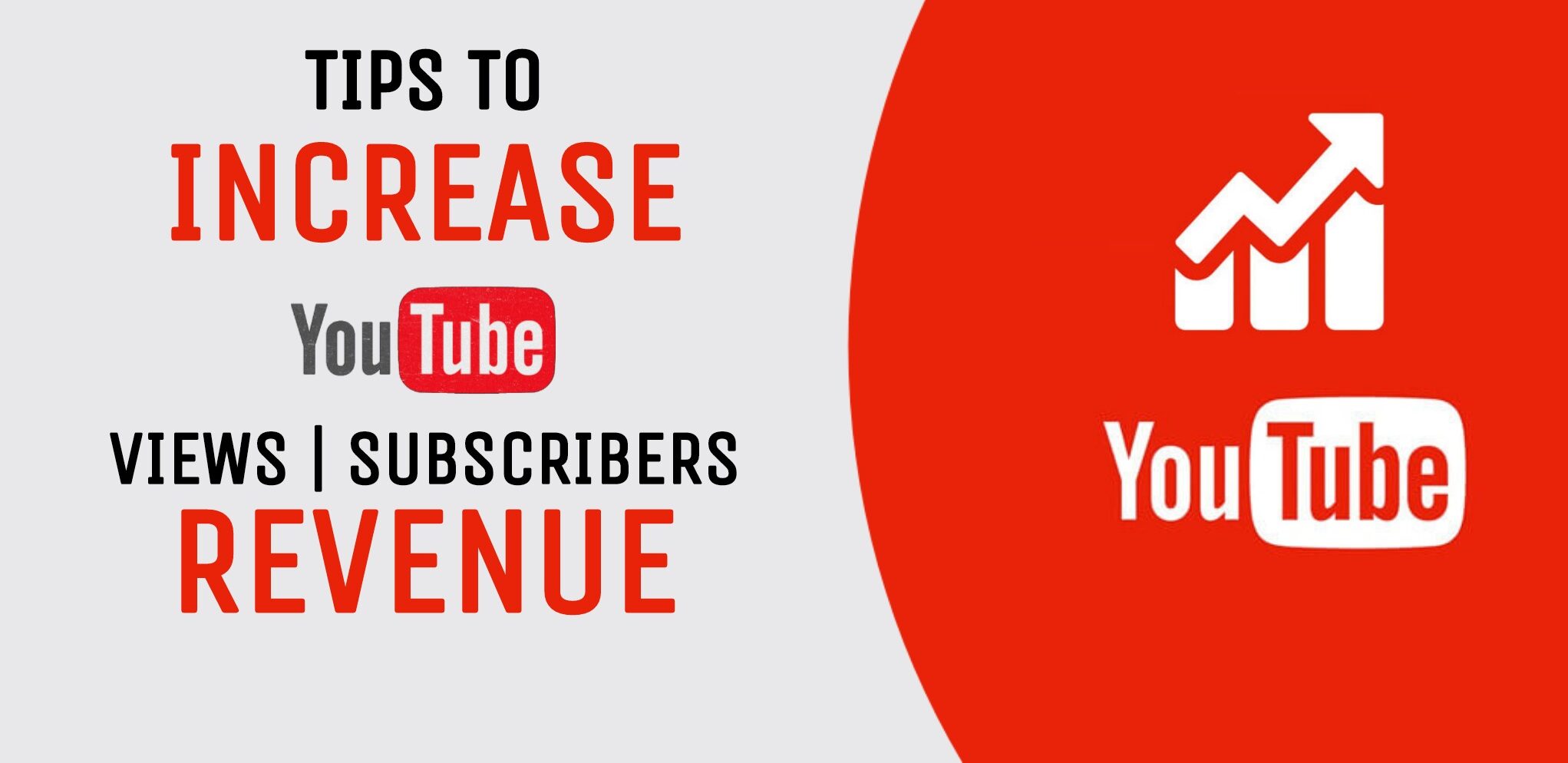YouTube has transformed the way we consume content, allowing creators from all walks of life to reach global audiences. With billions of views on videos, it’s more than just a platform for sharing clips; it's also a lucrative space for monetization. But what does it mean to monetize a YouTube channel? In simple terms, it’s about turning views into revenue. This process involves several avenues through which creators can earn money. Whether you’re a budding influencer, a seasoned creator, or simply curious about the financial potential of
The Basics of YouTube Earnings

When it comes to earning money on YouTube, there are a few fundamental components to consider. Here’s a breakdown that can help clarify the concept:
- Ad Revenue: This is the most well-known form of income for YouTube creators. By enabling ads on their videos, creators earn money based on views and clicks. The earnings are calculated using a metric called RPM (Revenue Per Mille), which is how much money the creator earns per 1,000 views.
- YouTube Partner Program (YPP): To start earning ad revenue, creators must apply to the YPP. This requires at least 1,000 subscribers and 4,000 watch hours in the past 12 months. Once accepted, creators gain access to monetization features.
- Channel Memberships: For channels with 30,000 subscribers or more, channel memberships allow fans to pay a monthly fee for exclusive perks such as badges and access to member-only content.
- Super Chat and Super Stickers: During live streams, viewers can purchase these features to get their messages highlighted, providing another source of income for creators.
- Sponsored Content: Many creators collaborate with brands for sponsored videos or product placements, which can yield higher earnings than ad revenue alone.
- Merchandise Sales: Some creators boost their earnings by selling branded merchandise directly to their audience.
These different streams of income mean that a creator can earn a significant amount once they accumulate a high view count, such as 2 billion views. This level of engagement not only showcases popularity but also translates into substantial financial viability!
Factors Influencing YouTube Revenue

Ever wondered how creators cash in on their YouTube channels? Well, the revenue generated isn’t just about how many videos get watched! Several factors come into play that can significantly influence YouTube revenue. Let’s break it down.
1. Viewer Engagement: The level of engagement your audience has with your content matters a lot. Higher likes, shares, and comments can lead to greater visibility. The more engaged an audience is, the higher the chances advertisers will pay more for ad placements.
2. Niche: Not all content is created equal! Some niches attract higher-paying advertisers than others. For instance, finance and technology channels often command a higher CPM compared to lifestyle or gaming channels. So, finding a lucrative niche can boost revenue.
3. Geographical Location: Where your viewers are watching from can affect earnings, too. Advertisers tend to pay more for views from countries like the US, Canada, and Australia compared to those from other regions. This discrepancy can make a significant difference in total revenue.
4. Ad Types: Different ad formats yield different revenue streams. Options include skippable ads, non-skippable ads, bumper ads, and display ads. Understanding which formats resonate best with your audience can help maximize ad revenue.
5. Seasonality: Revenue can fluctuate based on the time of year. Advertising budgets typically increase during the holiday season, which can lead to higher CPM rates and revenue spikes for creators.
Overall, YouTube revenue isn’t just a numbers game; it’s about understanding these influencing factors to optimize earnings!
CPM Explained: Cost Per Thousand Impressions
If you've ever dived into YouTube monetization, you may have encountered the term CPM, which stands for Cost Per Thousand Impressions. But what does it actually mean? Let’s unpack this concept!
Essentially, CPM is a standard measurement that represents how much advertisers are willing to pay for every 1,000 times their ads are shown on videos. This metric helps YouTube channels estimate their potential earnings based on their viewer impressions.
Here’s a quick breakdown:
| CPM Tier | Typical Rate | Example Channel |
|---|---|---|
| Low CPM | $0.50 - $2.00 | Vlogs |
| Average CPM | $2.00 - $8.00 | Lifestyle/Fitness |
| High CPM | $8.00 - $20.00+ | Finance/Technology |
Why is CPM important?
- Budgeting: Knowing your CPM helps in estimating your earnings and planning your content strategy accordingly.
- Performance Measurement: It allows creators to measure how well their content engages viewers based on revenue generated.
- Strategy Development: Understanding CPM is vital for targeting advertisers and tailoring content to attract lucrative sponsorships.
In a nutshell, CPM is a crucial player in the YouTube monetization game. As you create and grow your channel, keep a close eye on it to maximize earnings and keep your content thriving!
Estimating Earnings from 2 Billion Views
When it comes to estimating earnings from 2 billion views on YouTube, things can get a little tricky, but let’s break it down in a way that makes sense. YouTube creators earn money primarily through YouTube's Partner Program, which allows them to monetize their videos. The revenue generated largely depends on several factors, mainly the CPM (cost per thousand views). CPM rates can vary significantly, typically ranging from $0.25 to $4.00, depending on content, audience engagement, and the advertisers' target demographic.
Here's a rough estimate breakdown:
- If we take a conservative CPM of $1.00, that equates to:
- 2 billion views ÷ 1,000 x $1 = $2,000,000
- If the CPM is $2.00, the earnings could rise to:
- 2 billion views ÷ 1,000 x $2 = $4,000,000
- On the higher end, say a CPM of $4.00, you’d be looking at:
- 2 billion views ÷ 1,000 x $4 = $8,000,000
So, from the above, we can reasonably think that a channel that garners 2 billion views could earn somewhere between $2 million to $8 million, depending on the CPM rates. It's important to note that this is just from ad revenue; actual earnings can differ based on the content type and viewer demographics.
Other Revenue Streams for YouTube Creators
YouTube creators have various ways to supplement their income beyond just ad revenue. These additional revenue streams can often exceed what they earn from views alone and can contribute significantly to their overall earnings. Let’s discuss some of the most common options:
- Brand Sponsorships: Many creators collaborate with brands to promote products or services directly in their videos. The compensation can range from a few hundred to thousands of dollars, depending on the creator’s reach and engagement.
- Merchandise Sales: Successful YouTube personalities often sell branded merchandise, including clothing, accessories, and other products. This not only boosts their income but also helps to foster a loyal community.
- Affiliate Marketing: By promoting products and providing a special link, creators can earn a commission for every sale made through their referral. This is a win-win for both the creator and the business.
- Memberships and Subscriptions: Platforms like Patreon allow creators to provide exclusive content to fans who support them with monthly subscriptions, generating a steady stream of income.
- Live Streams and Donations: Through live-streaming features, creators can receive donations from their audience during live events, adding another layer of income.
By diversifying their income sources, YouTube creators can not only enhance their earnings but also create a more sustainable career on the platform. The key takeaway? It's not just about the views; it's about leveraging that audience effectively!
7. Case Studies of Successful YouTube Channels
When we talk about YouTube success, several channels shine brightly, each with unique strategies that contributed to their rise to fame. Let's delve into a few case studies that exemplify what it takes to reach that coveted mark of 2 billion views.
1. T-Series
As the world’s most subscribed YouTube channel, T-Series is a prime example of leveraging film and music content. They amassed 2 billion views by producing a steady stream of Bollywood music videos and trailers. Their consistent upload schedule and tapping into a massive audience has been key to their success.
2. PewDiePie
PewDiePie, the infamous gaming and entertainment channel, achieved the remarkable milestone through a mix of engaging content and personality-driven videos. His comedic approach, combined with the knack for connecting with his viewers, laid the foundation for unparalleled growth. His journey illustrates that personality and relatability can significantly sway viewer retention rates.
3. 5-Minute Crafts
This DIY channel became a sensation by creating easily digestible content focused on life hacks and crafts. Their short, engaging videos are often tailored to hit trending topics, capturing the attention of a diverse audience. This strategy highlights how niche targeting can pay off in enormous view counts.
4. Zara Larsson
The pop singer’s music videos, especially the catchy "Lush Life," propelled her channel to billions of views. Collaborating with other artists and leveraging social media for promotion allowed her to broaden her reach. It underscores the importance of collaboration in fostering channel growth.
Each case study reveals different pathways to success on YouTube. Whether it’s content style, consistency, or audience engagement, the key takeaway is that the backbone of any successful channel lies in understanding what resonates with viewers and delivering it consistently.
8. Conclusion: The Big Picture of YouTube Earnings
So, why does the magic number of 2 billion views matter? It’s not merely about the numbers; it's about the financial implications that come along with them. Let's explore the bigger picture when it comes to monetizing content on YouTube.
Firstly, achieving 2 billion views significantly enhances a channel's potential earnings. YouTube monetization primarily revolves around ad revenue, where every view can translate into cents, depending on various factors like audience engagement, location, and niche. Here’s a quick breakdown:
| Revenue Source | Details |
|---|---|
| Ad Revenue | Channels earn between $0.25 and $4 per 1000 views. |
| Sponsorships | Sponsored videos can range from hundreds to thousands of dollars. |
| Merchandising | Creators can also earn by selling merchandise linked to their channel. |
| Memberships | Channels can earn from viewer memberships for exclusive content. |
Additionally, achieving this level of viewership opens doors to greater visibility and engagement. Sponsorship deals become more lucrative, and opportunities for partnerships and collaborations widen.
In essence, reaching 2 billion views on YouTube is more than just a bragging right; it’s a gateway to substantial earnings and brand growth. As creators continue to engage and expand their audiences, understanding the dynamics of these views can help them strategize more effectively for future growth. So, for aspiring YouTubers reading this, keep creating and remember—every view counts!










